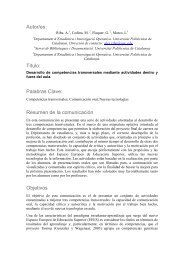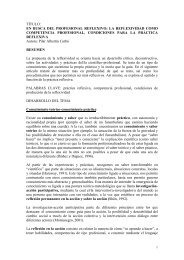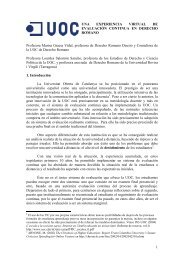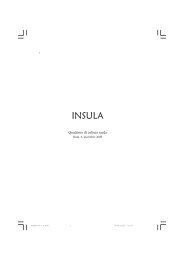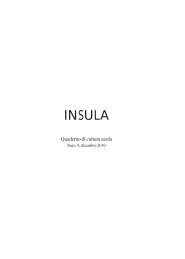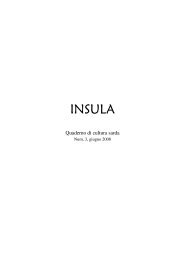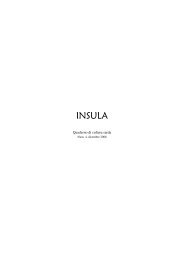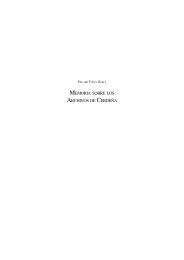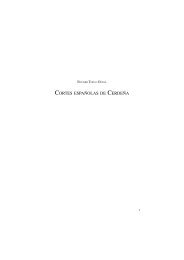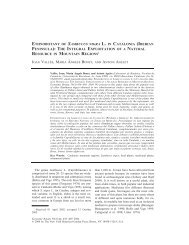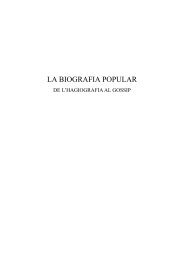Impaginato 5.p65 - Universitat Rovira i Virgili
Impaginato 5.p65 - Universitat Rovira i Virgili
Impaginato 5.p65 - Universitat Rovira i Virgili
You also want an ePaper? Increase the reach of your titles
YUMPU automatically turns print PDFs into web optimized ePapers that Google loves.
116<br />
Germanic-speaking zones we find the older figure standing, quite literally,<br />
alongside the modern Christianized character. In other words, the original figure<br />
has not been erased. Quite the contrary, the Austrian Krampus is still a very<br />
frightening creature.<br />
In the case of the linguistic and cultural artifacts drawn from zones inside<br />
the Pyrenean-Cantabrian refugium and/or closely linked to it, e.g., the Sardinian<br />
materials, we find a different symbolic regime operating where the main character<br />
did not undergo the same sort of Christianization. Here I refer to the Basque<br />
figure of Hamalau itself and its variants (e.g., in Mamu, Marrau, Hamalauzango/<br />
Hamalauzaku, etc.) as well as the Sardinian conceptual equivalents (e.g., variants<br />
in marragau, marragotti, mommotti, mamudinu, mamuthones, etc.) on the one<br />
hand, and on the other the frightening creature encountered within the<br />
geographical reach of the Pyrenean-Cantabrian refugium, referred to generically<br />
as L’Home del Sac and, more specifically, embodied in figures such as the Catalan<br />
Marraco, as it was originally understood. 25<br />
What is unusual is the fact that in this region of Europe the belief and associated<br />
performance art survived on the margins of Christianity. In all probability part of<br />
the reason for this lies in the fact that the Church managed to promote a different<br />
biblically-based Christianized identity for the gift-bringers, namely, the Three Kings<br />
who were in charge of bringing presents to well-behaved children on January 6 th .<br />
That strategic choice on the part of the Catholic Church, whether fortuitous or<br />
deliberate, allowed the belief in the older more ambivalent guardian figure to<br />
continue to operate on the margins of the dominant cultural discourse. There the<br />
character went on fulfilling its role as an asustaniños even though with time adults<br />
would invoke its name less frequently. Nevertheless, as we shall soon discover, in<br />
locations such as Catalunya, just as in Germanic-speaking countries, the<br />
Christianization process was incomplete and in some locations the furry creature<br />
continued to appear along with its Christianized brethren into recent times.<br />
5.1. Iberian «bogey-men»<br />
Roslyn M. Frank<br />
Writing in 1950s, the renowned Catalan ethnographer Joan Amades prepared a<br />
series of studies exploring what he called «ogros infantiles». He uses this term<br />
to refer to the same class of monstrous beings invoked by adults to frighten their<br />
25 In this respect I would mention the Basque figure of Olentzaro who will be discussed in detail in<br />
the next chapter of this investigation.




